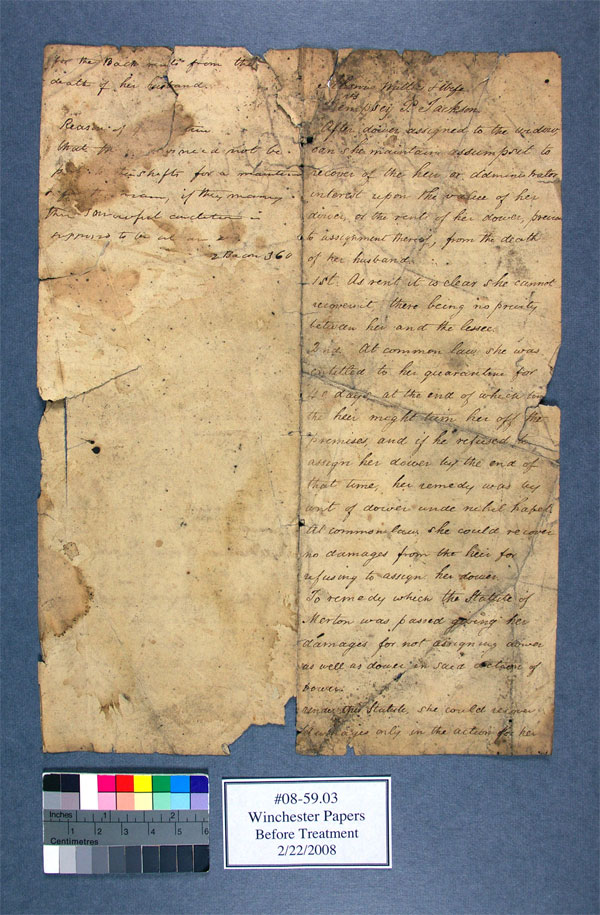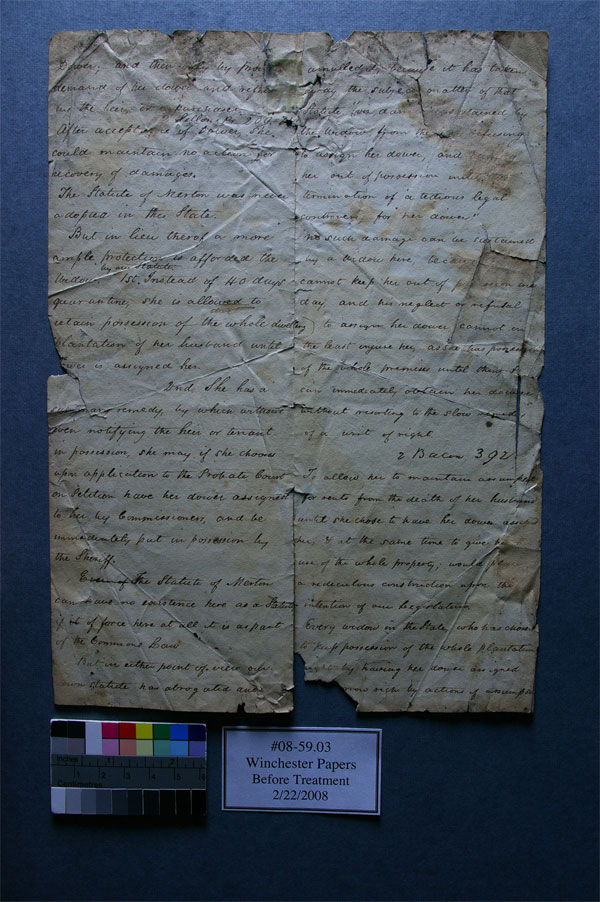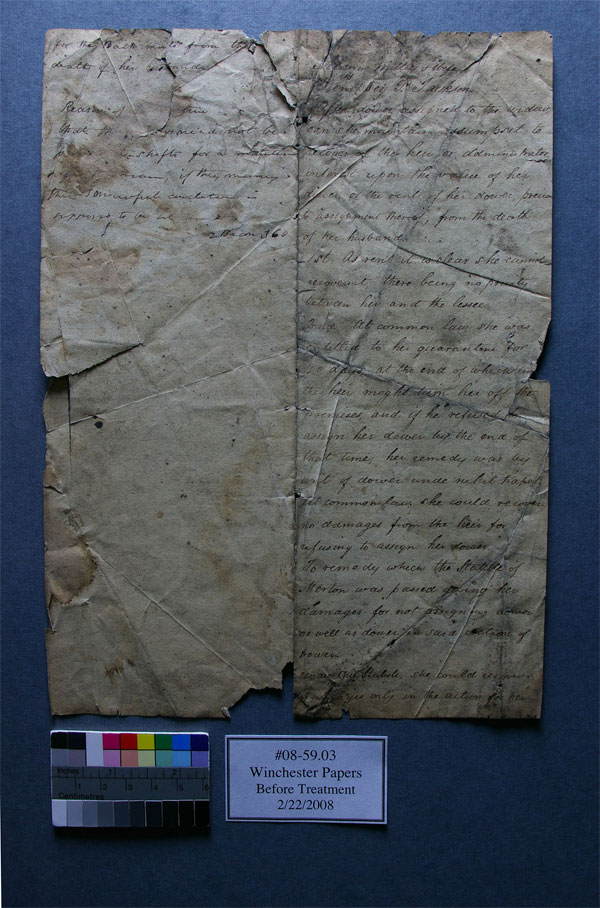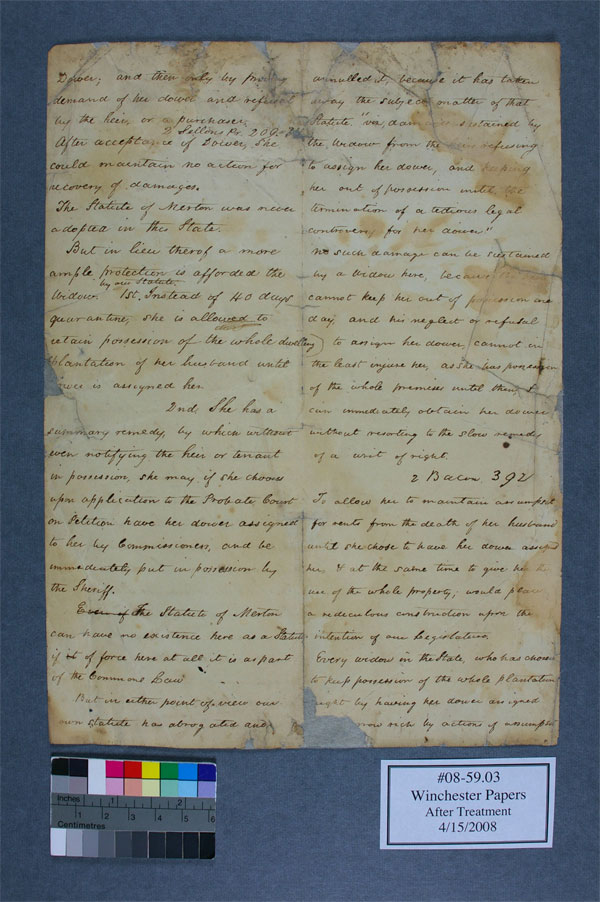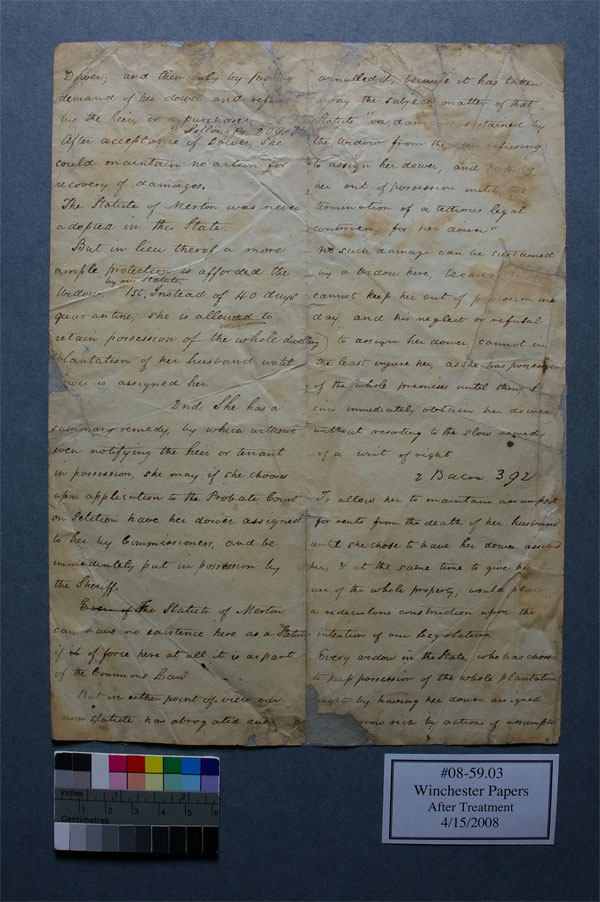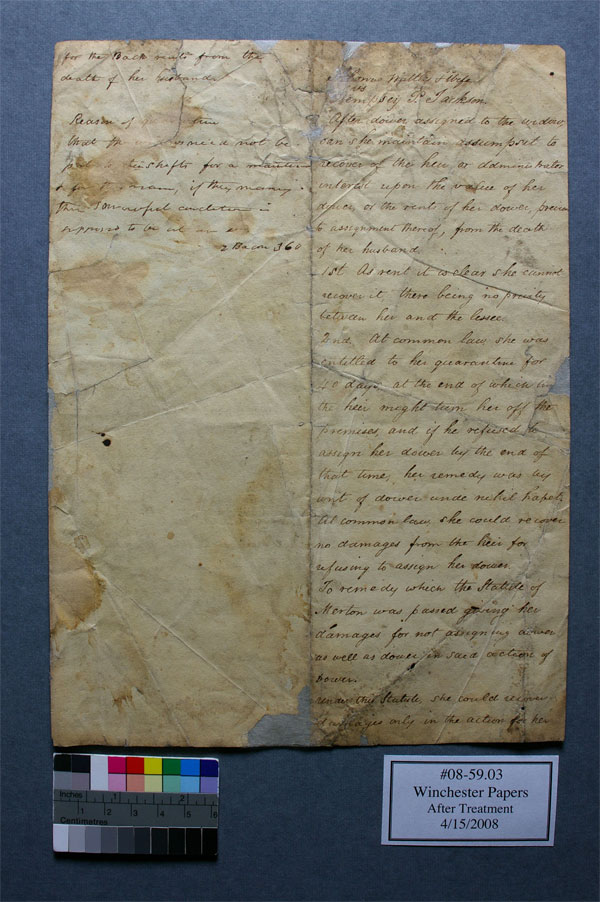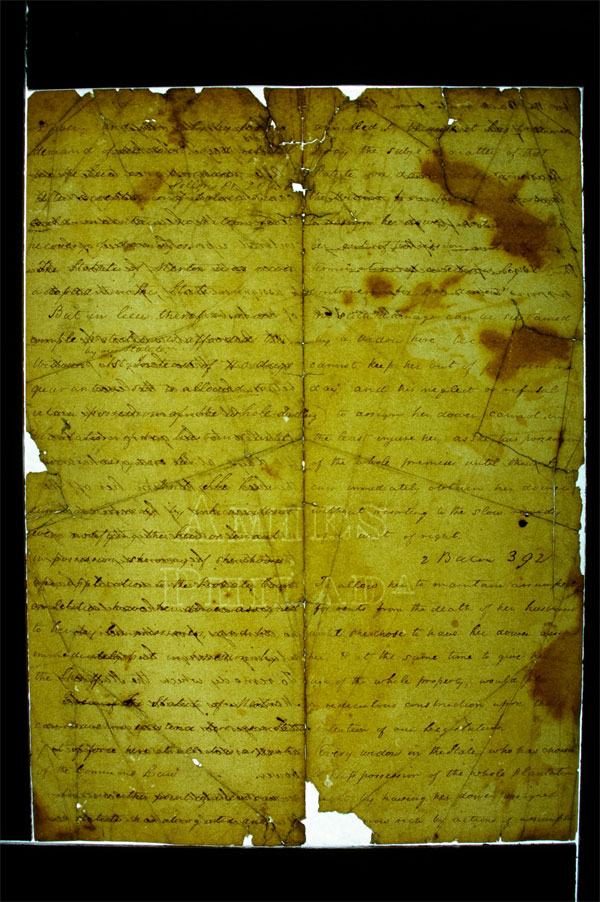Paper Treatments
Winchester Family Papers
Mending with Toned Tissue
Photo Documention
- Before
- After
Click thumbnails to view images.
Treatment Report
Treatment Objective
Objective of this treatment is to stabilize the document for safe handling and storage in a research institution.
Description
Custodian: Center for American History, University of Texas at Austin
Collection: Winchester Family Papers
Date of Production: Undated, c. mid 19th century
Place of Production: Mississippi
Primary support(hxw): various, in folder 11 x 17 inches
General
There are 99 leaves of manuscript in the collection written in a variety of writing inks on a variety of papers. The documents appear to be primarily legal in nature.
Media
The majority of the documents are written in iron gall ink applied with varying pressure. There are two leaves written in blue ink, perhaps indigo and/or Prussian blue inks. There are a few documents written solely in graphite and several include graphite annotations. One document is printed in black printerŐs ink. One document has a small flower painted in watercolor.
Primary support
The documents are written on a variety of papers. Approximately 60% of the papers are machine-made, many of which have laid lines produced by a dandy roll. The remaining 40% include both wove and laid hand-made papers. Colors include cream, beige, light blue, blued white, cream with brown lines, blued white with brown lines, light blue with brown lines, and cream with blue lines. Most are high quality, medium weight, and slightly textured. Several watermarks were observed, one is dated 1848. A few embossed seals were noted, one with red-orange residue. Mss. are found as single leaves, folios, and double folios. Two are bound, one with string, one with ribbon.
Condition
General
The overall condition of the Mss. ranges from good to poor with some major losses, tears, embrittlement, and staining. All are heavily soiled to a degree that obscures written information and precludes the cataloging of the collection.
Media
The iron gall inks exhibit varying degrees of fading and iron gall ink corrosion. Approximately 70% of the inks are in good to fair condition, having faded to a dark brown, but remain legible throughout. The remaining 30% exhibit severe fading and iron gall ink corrosion. Some inks have burned through the paper support creating a lacey appearance and rendering the documents illegible in some areas.
The light blue ink is in good condition with only minor fading.
The dark blue in is in good condition.
The graphite is in good condition.
The printerŐs ink is in good condition.
The watercolor is in good condition.
Primary support
The papers exhibit a variety of conditions, including heavy soiling, staining and discoloration, embrittlement, creases, tears, losses, and insect damage. Heavy soiling is the most prevalent and severe condition found, affecting all documents in the collection. A few leaves are quite brittle, likely due to severe iron gall ink corrosion. A few folios cannot be opened due to tight creases in the paper. Several leaves are unsafe to handle due to tears and major losses. Some documents are in fragments. A few documents have previous glassine tape repairs.
Treatment Proposal
- Surface clean as appropriate.
- Humidify and Flatten as needed.
- Mend tears as appropriate.
- Re-house in acid-free folder.
Photography
Digital images of three leaves, before and after treatment, front and back. Overview for ambient, raking, and transmitted light.
Possible Effects of Treatment
Friable or soft media could be abraded or lost during surface cleaning.
Treatment Notes
See attached.
Treatment Performed
The documents were surface cleaned with vinyl eraser crumbs, soot sponge, and a Hake brush. 6.6 hours
Creases were locally humidified and flattened with a cotton swab. 0.25 hours
Tears were mended with lens tissue and wheat starch paste. 3 hours
Extremely fragile documents and document fragments were placed in acid-free folders. The original folder was replaced with an acid-free folder. 0.15 hours
Total treatment time: 10 hours
Kilgarlin Center 08-60.03
Winchester Papers, Box #2E935, Folder #3

